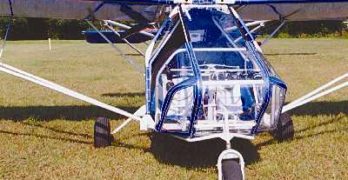I am amazed. I didn’t think AirBorne Australia could do it, but they made their top-of-the-line wing called the Streak 2000 handle dramatically better than previous iterations.
Published in Light Sport and Ultralight Flying
Seating
2, tandem
Empty weight
476 pounds
Gross weight
992 pounds
Wingspan
32.4 feet
Wing area
167 square feet
Wing loading
6.2 pounds per square foot
Length
11.3 feet
Height
11.5 feet
Fuel Capacity
18.5 gallons
Kit type
Fully assembled
Airworthiness
Certified SLSA
Build time
Minor assembly from shipping container
Standard engine
Rotax 5821 or 9122
Power
66 hp at 6,500 rpm
Power loading
12.4 pounds per hp
Cruise speed
(middle hole) 45-60 mph (forward hole) 75 mph
Stall Speed
39 mph
Never exceed speed
93 mph
Rate of climb at gross
770 fpm
Takeoff distance at gross
590 feet
Landing distance at gross
575 feet
Range (powered)
350 miles
Fuel Consumption
3.3 gph
Notes:
1also available with the Rotax 503 engine (2000 Article).2Rotax 512 UL (2006 Article).











